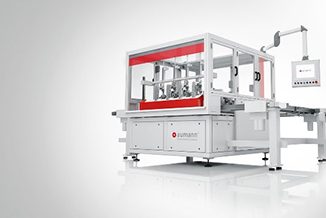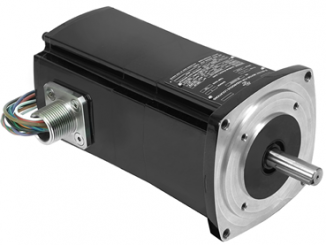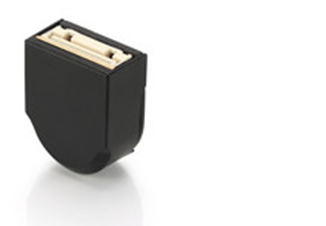Steve Constantinides, Principal Consultant | Magnetics & Materials, LLC
I was surprised to learn the extent of activity around motor efficiency improvement and the related new or updated standards. The following article should be considered an introduction to the topic. Many useful documents with links are shown in the references for those who wish to pursue the subject further.
Why is motor efficiency a hot topic? There are two separate and compelling reasons to promote improvements in motor systems to increase efficiency. The first is to meet more stringent government efficiency mandates. Motors consume a lot of energy and large industrial motors, running 24/7, are both a major user of electricity and an opportunity for significant reduction in energy consumption. The EPA in its review of electricity customers in the United States, informs that 50% of electricity consumption in manufacturing is by motors. [25] Furthermore, according to EIA, IEA, ABB, Siemens and others, global consumption of electric energy by motors accounts for about 45% of total electric generation with about 28% consumed within industry. The numbers we see vary by region with developing countries using a higher percentage of electric energy in motors due in part to widespread use of lower efficiency motors. Additional statistics are offered by Ferreira and de Almeida in their 2016 paper Overview of Energy Saving Opportunities in Electric Motor Driven Systems. [4]
Quantities used to describe energy production and consumption are very large: one familiar term is kilowatthours (kWh) and presented figures are in billions or trillions; another energy term is quads (a quadrillion BTU).
According to statistics for the USA published by Lawrence Livermore National Laboratories:
In 2017, electric power generation used 38% of all energy consumed in the USA to produce 12.5 Quads (quadrillion BTU) of usable electrical energy and 24.7 Quads of waste (mostly heat). The 12.5 Quads of electrical energy was distributed to residential, industrial, commercial, and transport users. [1]
Of the 12.5 Quads, 3.23 Quads were distributed to industrial use of which approximately 68% was used by electric motor-driven systems for such processes as refrigeration, process pumps, fans, compressors, material handling, materials processing and facility HVAC systems. [2]
Therefore, net power input to industrial motor systems was 2.2 Quads (equal to 6.45×1011 kWh).
Demand for electricity is forecast to grow. Per EIA and IEA forecasts, global demand will rise at an average annual rate between years 2015 and 2040 of approximately 1% in developed countries and 2.8% in emerging market regions with an overall average of 2.3%. [3]

The second compelling reason to improve motor efficiency is that it is, more often than not, economically justifiable. The operating cost of purchased electricity for an industrial motor over its life represents approximately 95% of the total cost of ownership. The trade-off is higher initial capital cost versus lower continuing operating expense. Large motors, >5 HP, offer considerable saving opportunities.
For comparable electric rates, run-time, and percent load, savings are approximately linearly related to horsepower. Thus, a 1 HP motor might save only $22.80 per year (at $0.10 per kWh) whereas a 1,000 HP motor might save $22,800 per year in cost of electricity. The savings are calculated based on an operating efficiency improvement from 91% to 94%. In a simplistic calculation, over the 20-year life of the 1,000 HP motor, assuming no increase in cost of electricity, savings of $456,000 would accrue! [4] The DOE offers a tip-sheet with advice on when to purchase premium efficiency motors. [21]
What products are covered by the new/developing standards? Products covered by the several evolving efficiency standards are defined as low voltage, either
Due to the greater power consumption and energy savings potential, large motors with an extended on period, are the primary industrial targets for R&D to achieve efficiency gains for new motor installations and in replacement of existing motors.
Who is engaged in setting standards? Standards organizations from Europe, Brazil, China, the USA and others have formulated efficiency standards.[5] International Standard IEC 60034-30-1, Edition 1.0, 2014-03[7], is the current applicable standard adopted by many countries including the USA. If the complete standard is not required by you or your organization, ABB has published an excellent summary [8] as also has Siemens.[9] In the USA, the standard is incorporated by NEMA in the US Code of Federal Regulations, e-CFR Title 10, Chapter 11, Subchapter D: Part 431 Subpart B. [12]

IEC standard 60034-30-1 covers rotating machines:
Line operated AC motors
Rated power from 0.12 kW to 1 000 kW
Rated voltage above 50 V up to 1 kV
Have 2, 4, 6, or 8 poles
Are capable of continuous operation at rate power
Ambient temperature of -20 C to +60 C
For use at an altitude up to 4 000 meters above sea level
Standard 60034-30-1 includes performance requirements for four levels of product efficiency. IE5 is currently under development and not included in the standard. (IE = International Efficiency).
IE1: motors with standard efficiency
IE2 motors with high efficiency
IE3 motors with premium efficiency
IE4 motors with super-premium efficiency

European countries have adopted the Euro eco-design initiatives which include the EU MEPS (Minimum Energy Performance Standard).[15,16,24]
2005/32/EC Directive known as the eco-design Directive for Energy using Products (EuP)
2009/125/EC (eco-design) Directive for Energy-related Products (ErP)
Another organization, EMSA (Electric Motor Systems) has published guidelines and policies related to efficiency: 4E (IEA Technology Collaboration Programme); 4E Electric Motor Systems Annex (EMSA). (Visit www.emsa.org). 4E is an abbreviation for Energy Efficient End-Use Equipment. [17] EMSA publications include:
2009: EMSA Motor MEPS Guide
2011: EMSA Motor Policy Guide, Part 1
2014: EMSA Policy Guidelines for Electric Motor Systems, Part 2
2015: 4E Energy efficiency roadmap for electric motors and motor systems
2016: 4E EMSA Policy Guidelines for Motor Driven Units, Part 1
2018: 4E EMSA Policy Guidelines for Motor Driven Units, Part 2
In the United States: The U.S. Department of Energy (DOE) issued new efficiency regulations in May 2014 for integral horsepower motors to be effective June 2016. The scope of coverage has been expanded to cover more configurations than in previous regulations Motor regulations for Canada and Mexico generally follow what is adopted in the United States. Europe is updating succeeding regulations for LV motors (low voltage, <1,000 V) and drive systems with an extended product approach due in 2018 to cover from 0.12 to 1,000 kW. The DOE is also studying pump, fan, and compressor systems and how the system efficiency can/should be regulated. [5]
Another challenge is meeting motor system test requirements. While MEPS are now most often based on the motor efficiency classification and efficiency test methods in IEC Standards, the process and requirements for certification and compliance vary greatly from country to country, including test standards, laboratory accreditation, sampling, test process and labelling.
The IECEE Global Motor Energy Efficiency Programme (GMEE) addresses the many trade barriers due to these differing country regulations for motor efficiency, and attempts to set up a globally harmonized and applicable program. The GMEE program is developed on a strong foundation: a) one recognized motor efficiency test method (IEC 60034-2-1), b) one test report format, and c) a common certification process based on the international IECEE/CB Scheme. [22, 23]
It appears challenging for motor manufacturers to remain current with domestic regulations and with regulations of those countries to which they desire to export product.
How can motors be made more efficient than they already are? Efficiency improvements have been designed or predicted based on changes to motor systems. Some examples are as follows.
Motor designs are being refined: minimized air gaps, maximum copper slot fill, etc.
A switch to thinner gauge silicon iron to reduce eddy current loss
Sophisticated electronics for powering and operating the motor at peak efficiency
Increasing use of permanent magnet motors versus induction (wound field) see accompanying charts for efficiency and powder factor comparisons
Amorphous materials (e.g., Hitachi Metglas) to achieve IE5 performance
High performance lamination materials (e.g., Co-Fe or Ni-Fe) for high rpm and totally enclosed motors
Matching of motor power output to energy demand in order to run at peak efficiency
Variable speed drive (and control)
Presently, due to the adoption of minimum energy performance standards (MEPS) in the majority of the developed countries, the electric motor market is moving toward Premium (IE3) and Super-Premium (IE4) efficiency motors. Yet, the motor is just one of the components of the EMODS, and the overall efficiency of the latter is strongly dependent on all the system components efficiency, as well as on the process control strategy (speed/torque control and feedback from the system/process). The use of variable-speed drives (VSDs) is a good example leading to large energy savings in systems requiring variable output. [4]
FOC (field-oriented control) adjusts motor speed and torque for the most efficient operation
Hybrid motor designs (e.g., permanent magnet assisted synchronous reluctance motors)

In the United States, DOE is funding R&D, currently at $25 million, for development of Energy-Efficient Electric Motors: 13 projects have been identified. [11]
Amorphous and Nanocomposite Magnets for High Efficiency High Speed Motor Designs
Carbon Conductors for Lightweight Motors and Generators
Conductor Cable Coils for Next Generation Electric Machines
Conical Air Gap Axial Motor Using Soft Magnetic Composite Materials and GOES
Enhanced 2G HTS Superconducting Wire
High Silicon Steel Sheet by Shear Based Processing
Nanometal Interconnected Carbon Conductors for Advanced Electric Machines
Polydopamine PTFE Composite Coating for Large Scale Journal Bearings in Next Gen Electric Machines
Process Innovations for 2G HTS Wire Manufacturing
Resistively Graded Insulation System for Next Gen Converter Fed Motors
Steel Alloy for High Specific Resistivity
Additionally, the Advanced Manufacturing Office (AMO) within DOE has initiated a Next Generation Electric Machines (NGEM) program. It is an R&D effort leveraging recent technology advancements in power electronics and electric motors to develop a new generation of energy efficient, high power density, high speed, integrated medium voltage drive systems for diverse applications. Key enabling technologies being developed include: wide bandgap devices, advanced magnetic materials, improved insulation materials, aggressive cooling techniques, high speed bearing designs, and improved conductors or superconducting materials. [20]
What about motor repair versus replacement? Motors can be rewound without losing performance when the repair is done carefully (see Cao and Bradley, 2006).[18] However, an analysis is advised regarding cost effectiveness of replacement of the older, less efficient motor with a new, higher efficiency motor.
Moving beyond motors Efforts have been underway, especially in Europe, to move past just the motor and include the entire drive system in a new standard: EN 50598. [5,30]

This quote from ABB summarizes the standard. [29]
EN 50598 is a three part standard looking at Ecodesign for power drive systems and their driven applications.
EN 50598-1 of the standard (released December, 2014) is titled General requirements for setting energy efficiency standards for power driven equipment using the extended product approach (EPA) and semi-analytic model (SAM).
EN 50598-2, released in December, 2014, is titled Energy efficiency indicators for power drive systems and motor starters.
EN 50598-3, released in March, 2015, is titled Quantitative ecodesign approach through life cycle assessment including product category rules and the content of environmental declarations.
The standard is being produced by CENELEC, the European committee for electrotechnical standardization.
Understanding EN 50598-2: EN 50598-2 defines energy efficiency indicators (IE and IES) for the complete drive module (CDM) and the combination of the CDM and motor to form a power drive system or PDS. The standard includes methodology to determine the CDM and PDS losses, assigning the IE and IES values. This standard applies to motor driven equipment from 0.12 to 1,000 kW (100 to 1,000 V).
In Summary The significant push over the last 20 years has resulted in several updated and new standards. This evolution is expected to continue without abatement and to spread to the emerging markets. In order to ensure product compliance and to guide product development, it is imperative that manufacturers follow these developments closely and participate in their development.
References
1. Sankey diagram from Lawrence Livermore National Laboratories downloaded April 2017 from: https://flowcharts.llnl.gov/content/assets/images/charts/Energy/Energy_2017_United-States.png
As used in the chart: A quad is a unit of energy equal to 1015 (a quadrillion) BTU, or 1.055 1018 joules (1.055 exajoules or EJ) in SI units. The unit is used by the U.S. Department of Energy in discussing world and national energy budgets.
2. Electric Machines; Downloaded April 2018 from: www.energy.gov/eere/amo/electric-machines
3. International Energy Outlook 2017; Energy Information Agency (EIA); downloaded from: https://www.eia.gov/outlooks/ieo/pdf/0484(2017).pdf
4. Overview on Energy Saving Opportunities in Electric Driven Systems Part 1: System Efficiency Improvement; Ferreira and Almeida; 2016-ESC-0071; IEEE 2016
5. Motor and Drive-System Efficiency Regulations; Malinowski et al.; IEEE Industry Applications Magazine, January-February 2017, pp.34-41
6. NEMA MG 1-2016, Motors and Generators; National Electrical Manufacturers Association (NEMA), https://www.nema.org/Standards/Pages/Motors-and-Generators.aspx
7. IEC Standard 60034-30-1:2014 Rotating electrical machines – Part 30-1: Efficiency classes of line operated AC motors: https://webstore.iec.ch/publication/136
8. IEC 60034-30-1 standard on efficiency classes for low voltage AC motors; Downloaded from ABBs website on 2018-06-07: http://www04.abb.com/global/seitp/seitp202.nsf/c71c66c1f02e6575c125711f004660e6/20a5783a8b31d05748257c140019cc05/$FILE/TM025+EN+RevC+01-2012_IEC60034-30.lowres.pdf
9. Efficiency classes for IEC line motors; Siemens: https://w3.siemens.com/drives/global/en/motor/low-voltage-motor/efficiency-standards/pages/line-motors.aspx
10. EuP Lot 30: Electric Motors and Drives, Task 1: Product Definition, Standards and Legislation; ENER/C3/413-2010, Final April 2014; Almeida et al
11. DOE announces $25 Million for Energy-Efficient Electric Motors, Nov 29, 2016: www.ecmweb.com/motors/doe-announces-25-million-energy-efficient-electric-motors
12. Electronic Code of Federal Regulations: www.ecfr.gov/cgi-bin/retrieveECFR?n=pt10.3.431
13. Impact of the Integral Horsepower Amended Rule (1-500 HP Motor); Boteler and Malinowski; NEMA: http://www.nema.org/Communications/Documents/NEMA-Integral-HP-Rule-Webinar.pdf
14. Understanding the new DOE NEMA Premium Efficiency Rules; US Motors (NIDEC): http://acim.nidec.com/motors/usmotors/energy-efficiency/2016-doe-nema-premium-efficiency-rule
15. EU MEPS – everything you need to know; ABB, April 05, 2017: https://library.e.abb.com/public/90c00df473244492a2ed3cecd431e440/EU%20MEPS_032017_Everything%20you%20need%20to%20know.pdf
16. EU MEPS Efficiency requirements for low voltage motors, Updated for stage 3 requirements; Jan 2017: https://library.e.abb.com/public/0119fb1fa72f4b72b96801307ece2f54/13894_ABB_Motors_EU_MEPS_brochure_update_lowres.pdf
17. Global effort for efficient motor systems; Werle et al., EMSA, 2011: https://www.motorsystems.org/files/otherfiles/0000/0079/werle_emsa_12092011.pdf
18. Assessing the impacts of rewind and repeated rewinds on electric motors; Cao and Bradley; IEEE, 2006: https://ieeexplore.ieee.org/document/7728074/
19. Induction versus Permanent Magnet Motors; Melfi, Evon, McElveen; IEEE Industry Application Magazine, Nov-Dec 2009
20. Advanced Manufacturing Office, Electric Machines; https://www.energy.gov/eere/amo/electric-machines
21. When to Purchase Premium Efficiency Motors; DOE Energy Tips: Motor Systems; https://www.energy.gov/sites/prod/files/2014/04/f15/whentopurchase_nema_motor_systemts1.pdf
22. IECEE Global Motor Energy Efficiency; https://www.iecee.org/about/gmee/
23. Examples by Industry Sector: Electric Motors; www.iec.ch/perspectives/government/sectors/electric_motors.htm
24. Global MEPS Guide for Low Voltage Motors; Published by WEG Group, Brazil; http://ecatalog.weg.net/files/wegnet/WEG-global-meps-guide-for-low-voltage-motors-50060049-brochure-english.pdf
25. EPA: Energy and the Environment Electricity Customers; https://www.epa.gov/energy/electricity-customers
26. NEMA Premium Efficiency Motors Overview and Benefits; Jahnavi Sajip, New York Engineers; https://www.ny-engineers.com/blog/nema-premium-efficiency-motors
27. The Latest Motor Efficiency Rule Hits June 1, 2016 Now What?; Lewotsky, Motion Control & Motor Association: https://www.motioncontrolonline.org/content-detail.cfm/Motion-Control-Technical-Features/The-Latest-Motor-Efficiency-Rule-Hits-June-1-2016-Now-What/content_id/1690
28. Standards for Efficiency of Electric Motors, Permanent magnet synchronous motor technology; de Almeida, Ferreira, Fong; IEEE Industry Applications Magazine, Jan-Feb 2011; https://www.researchgate.net/publication/224194916_Standards_for_Efficiency_of_Electric_Motors
29. What is EN 50598?; ABB; https://new.abb.com/drives/ecodesign/what-is-en50598
30. The European Standard EN 50598-2: Efficiency Classes of Converters and Drive Systems; Tsoumas, Tischmacher, Kllensperger; https://ieeexplore.ieee.org/document/6960292/



